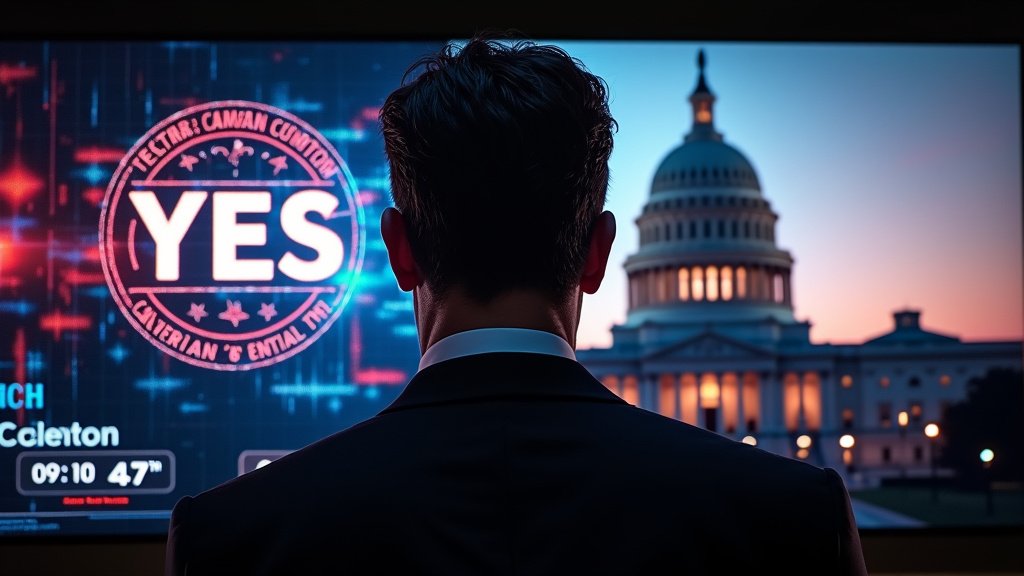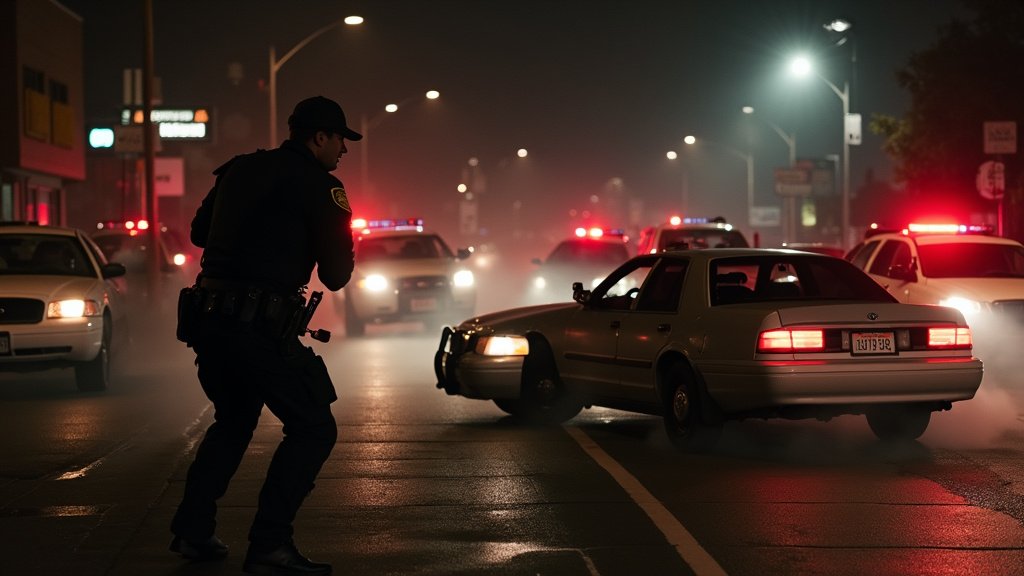The battle over California’s newly proposed congressional district maps has escalated into a high-stakes advertising war, with the outcome of Proposition 50 potentially decided by who can capture the most eyeballs and ears in the final days before the November 4th vote. This pivotal measure seeks to redraw California’s U.S. House districts, a move spearheaded by Governor Gavin Newsom and backed by Democrats, aiming to counter Republican redistricting efforts in Texas and bolster Democratic chances of regaining a House majority in the 2026 midterm elections.
The Stakes: A National Power Play
The current fight over California’s congressional map is far more than a state-level political skirmish; it carries significant national implications. At its core, Proposition 50 is a response to a Republican-led redistricting push in Texas, reportedly at the behest of former President Donald Trump, which could net the GOP up to five additional House seats. Governor Newsom and his allies frame California’s counter-measure as a necessary defense of democracy against perceived partisan gerrymandering and a strategic move to neutralize potential Republican gains, thereby influencing the balance of power in Washington.
Currently, Democrats hold 43 of California’s 52 congressional seats, with Republicans holding nine. The proposed maps, if approved by voters, could shift up to five of these Republican-held districts to be more Democratic-leaning, potentially reducing the GOP’s representation in the state to as few as four seats. This shift could be crucial in determining which party controls the U.S. House of Representatives, a razor-thin margin that has national consequences for legislative agendas and the political landscape.
The Advertising Arms Race: A Lopsided Battle
In the closing weeks of this high-stakes contest, advertising spending has become a critical determinant of success. Data from advertising tracker AdImpact reveals a stark disparity in campaign outlays. Supporters of Proposition 50, including Governor Newsom’s campaign and groups like the House Majority PAC and the Fund for Policy Reform, have collectively spent significantly more than opponents. As of recent reports, supporters have aired nearly $70 million in ads, with substantial ad buys booked on broadcast TV, cable, and radio, totaling approximately $9 million in the immediate lead-up to the election.
In contrast, opponents, primarily funded by figures like Charles Munger Jr.—an heir and advocate for independent redistricting who has contributed over $32 million—have spent an estimated $31 million. Reports indicate that some opposition groups, including those led by former Speaker Kevin McCarthy, have significantly scaled back their TV advertising in the crucial final weeks, fueling Republican pessimism about their chances. This spending gap extends to major endorsements, with former President Barack Obama appearing in ads supporting Proposition 50, while former Republican Governor Arnold Schwarzenegger has voiced opposition.
Messaging and Strategy in the Closing Days
Both sides are employing distinct messaging strategies to sway voters. Supporters of Proposition 50, heavily backed by Democratic organizations and figures like Tom Steyer, are framing the vote as a direct confrontation with Donald Trump and a fight to protect democracy and counter what they call “election rigging.” Their ads often nationalize the issue, linking Proposition 50 to broader Democratic goals and warnings about Republican overreach.
Opponents, led by Charles Munger Jr., are emphasizing a message of good governance and adherence to California’s established independent redistricting process. Their campaigns highlight concerns that Proposition 50 represents a partisan power grab that undermines the work of the Citizens Redistricting Commission, which was created to eliminate gerrymandering. They argue that the legislative-drawn maps are designed purely for political gain and could divide communities.
National Implications and Newsom’s Role
The outcome of Proposition 50 is widely seen as having national ramifications, potentially influencing President Trump’s legislative agenda and bolstering Governor Newsom’s political standing. Newsom, often viewed as a potential presidential contender, could see his profile significantly enhanced within the Democratic Party for spearheading an initiative that could shift the balance of power in Congress. The extensive media markets in Los Angeles and across California are central to this national narrative, making the advertising edge particularly critical.
The Ad Spend Edge: A Deciding Factor?
With voting already underway, the significant advertising advantage held by Proposition 50’s supporters could prove decisive. The data suggests a clear lead in ad spending, particularly in broadcast TV and cable, which remain vital pipelines to voters in the vast state. While streaming services and mailers also play a role, the reported $31 million gap in ad buys highlights the challenge facing opponents in the final stretch. The outcome of this contentious redistricting battle, and its impact on the U.S. House, may well turn on the effectiveness of these last-minute advertising blitzes, making this a crucial moment in California’s political landscape and a trending topic for news across the nation, including in Los Angeles.





